Sails of Time
-
Ships in 3 to 4 weeks
Details
Description
SKU: CN.13040
Composed by David Gillingham. Band Music. Score and parts. Duration 10:00. Published by C. Alan Publications (CN.13040).Gillingham provides a celebration of the rich history of Sydney, Australia, while honoring the beauty and grandeur of this magnificent city identified by the icon of the sails of its famous Opera House. Incorporating native folksong, indigenous sounds and melodies combined with original material, a sculpture in sound emerges in Sails of Time. Originally conceived for a mass band setting consisting of three separate ensembles, the work is suited to a traditional setting using one ensemble.
Sails of Time was commissioned by Kingsway International and was written to celebrate the rich history of Sydney, Australia, and to honor the beauty of grandeur of this magnificent city identified by the icon of the sails of its famous Opera House. The work is bound together by two main melodic ideas consisting of the Australian folksong, Click Go the Shears, and an original theme, Sails of Time, after the title. The work begins with the tolling of the "bells of time" followed by a drone of the "didgeridoo" played by the tubas, representing the indigenous aboriginal people who fished the waters of the Sydney harbor for 50,000 years prior to its settlement. Above the drone, a distant solo piccolo and muted trumpet play phrases from the popular Australian folksong, Click Go the Shears. Woodwind trills along with a piano ostinato announce the arrival of British convicts in 1788. Low brass and woodwinds play the folksong, Bound for South Australia, ominously in Bb minor. This is followed by a "Prisoner Walk", emulating the monotonous daily routine of the prisoners who were the first inhabitants of Sydney. They sing a blues-like tune to break the monotony as they shuffle along in shackled feet. (Listen for the constant clash of the chain.) The section escalates to a conclusion and segues into gentle breezes of keyboard percussion and rustling flutes leading to the first presentation of the Sails of Time theme played by horns, alto saxophones and oboes. The theme represents the hope for a much brighter future for the fledging settlement of Sydney. The section settles down to stillness and a distant piccolo and muted trumpet again play motives from Click Go the Shears. A vibrant percussive interlude leads to a presentation of Click Go the Shears by piccolo and bass clarinet followed by echoing of motives between the ensembles within the massed band. The "growing pains" of Sydney are reflected by a sequence of motives from the Sails of Time theme which rise to a pinnacle in C major by the massed band only to be interrupted by a mournful section in F# minor. In this section, one is reminded of the "unruly society" in the early years of the city of Sydney. An oboe solo sorrowfully sings the tale on a motive extracted from the Sails of Time. Cascading woodwinds and keyboard percussion interrupt and, once again, provide hope to the negative situation and grow to a fugal exposition on the theme from Click Go the Shears. The sure-footed counterpoint and energy evidence the city's "gold and growth" era. The section segues to a sparkling and energetic percussion interlude which transitions to a joyful rendition of the Sails of Time accompanied by the driving rhythm Click Go the Shears. The "bells of time" interrupt to remind one of the city's roots with the drone of the didgeridoo. Distant solo piccolo and muted trumpet echo motives of Click Go the Shears one last time. The work ends triumphantly with a final statement by both themes. Sails of Time was written to be performed as a massed band divided into three ensembles, premiered in the Sydney Opera House in Sydney, Australia. However, the work can be easily performed by one concert band. The massed band set up is pictured above where Ensemble 1 is on the main stage and Ensemble 2 and Ensemble 3 are positioned to the right and left of the stage, respectively. This set up enables a sort of antiphonal effect between the participating ensembles. All of the percussion should be set up on stage with Ensemble 1. Because there will be multiple percussion players, it is suggested that the duties be divided evenly between the players for the performance. The score and parts indicate which ensembles play throughout the piece and where the "massed band" is to play. There are two off-stage players required for this work: piccolo (back stage left) and trumpet (back stage right).
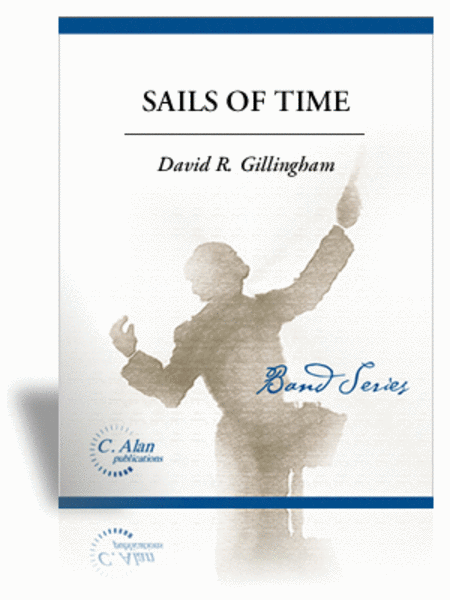
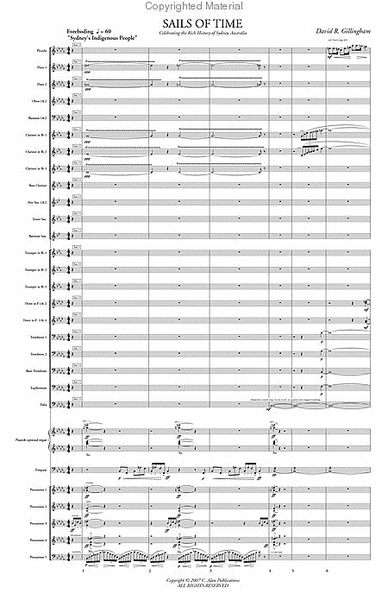
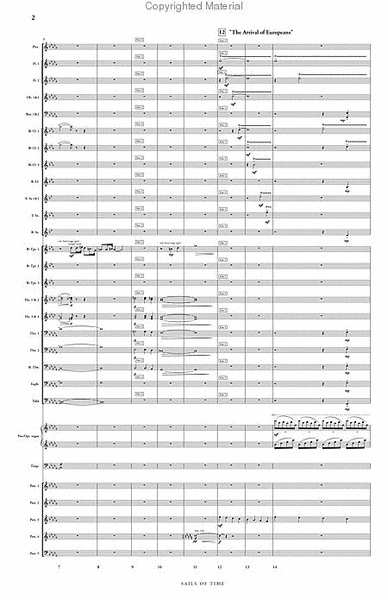
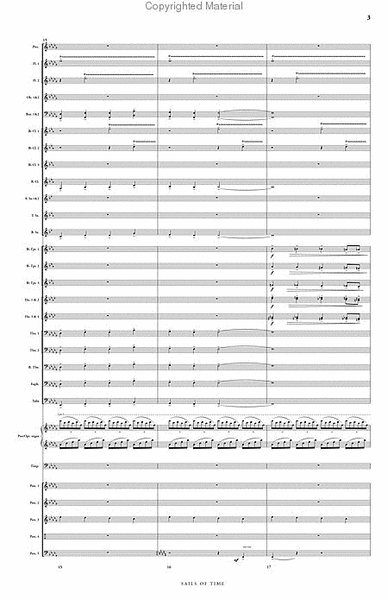
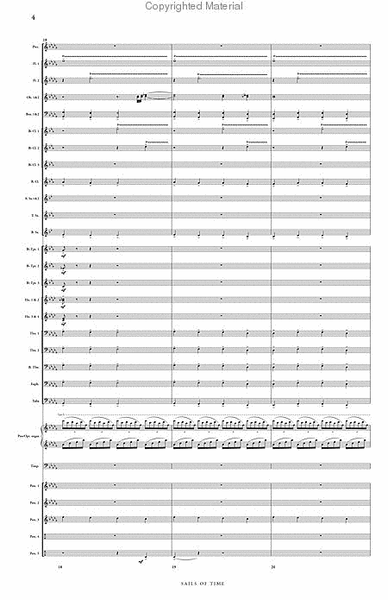
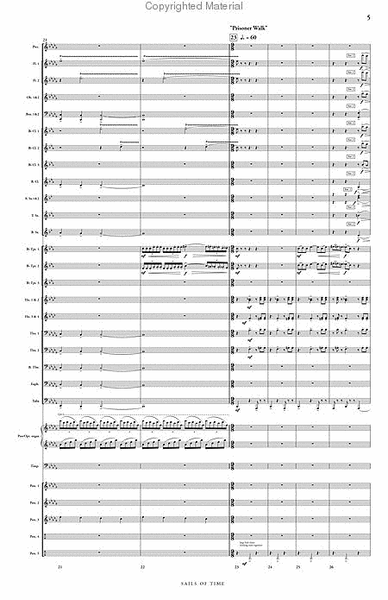
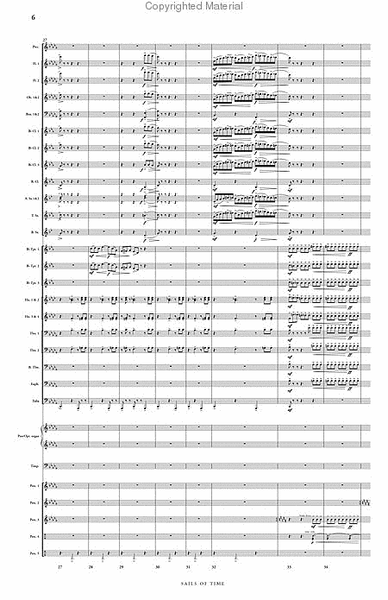
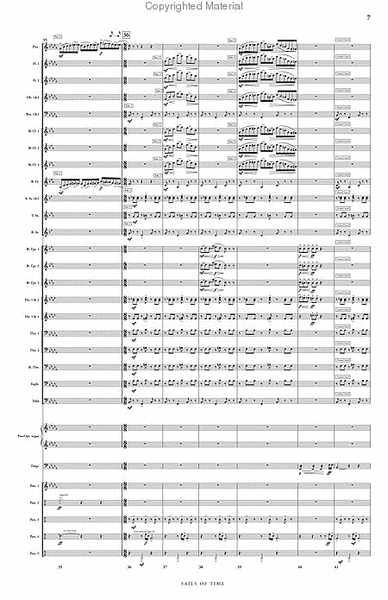
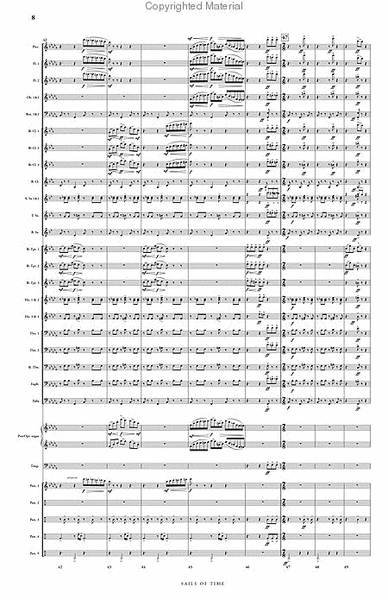
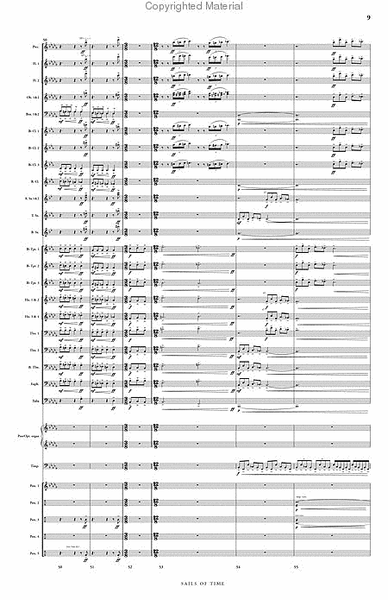
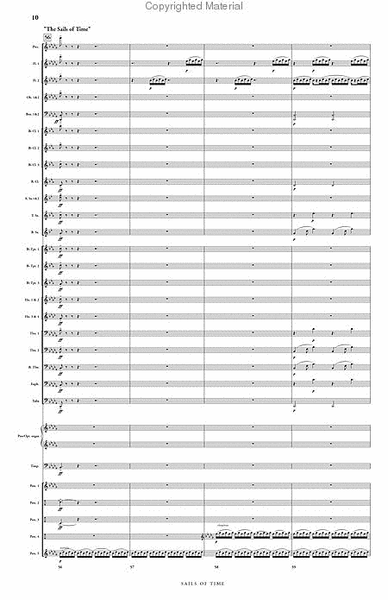
 Share
Share